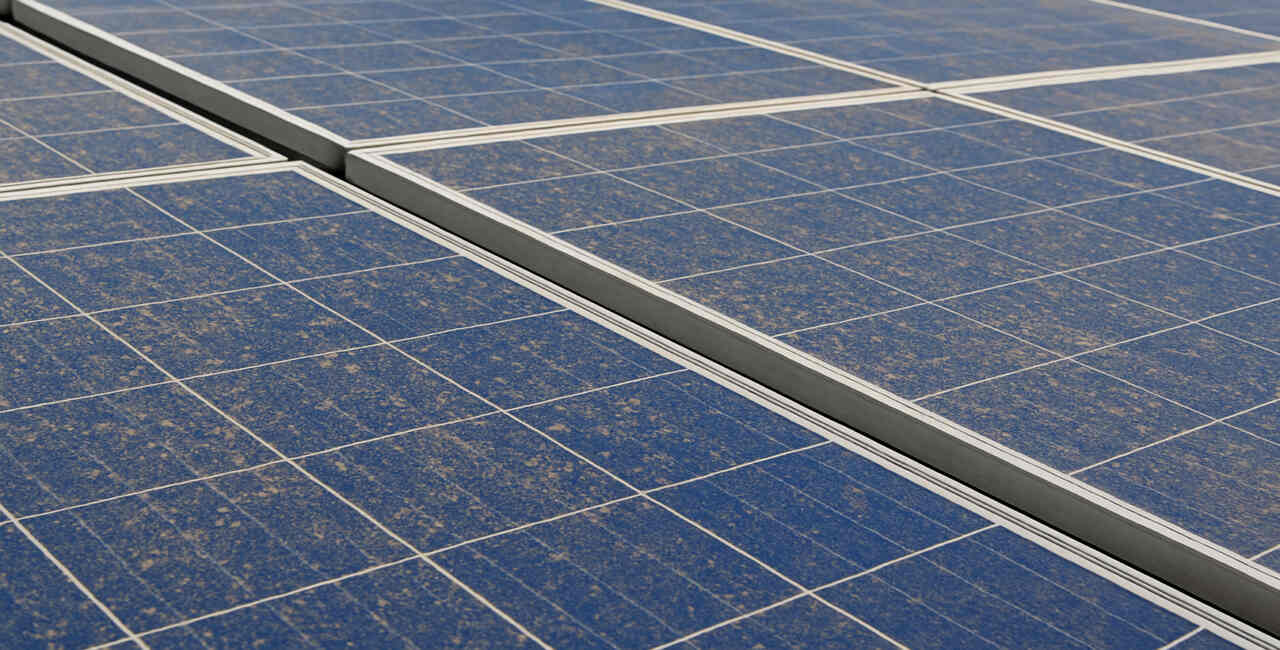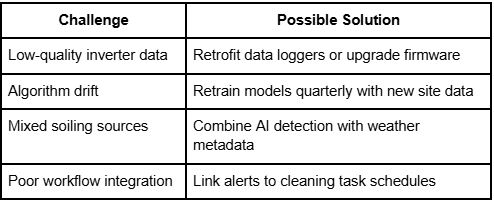-1%20(1).jpg)
Dust is one of the most common causes of energy loss in rooftop solar systems. Even a thin layer of dirt can quietly reduce the output and damage modules over time. Traditional cleaning and monitoring systems are effective but cost a lot of money and is a huge commitment.
A new low-cost approach is changing that.
A recent study found that using only inverter operational data like voltage, current, and time, combined with AI and machine learning algorithms can detect dust accumulation with over 96% accuracy without additional sensors. This method allows timely cleaning and faster yield recovery all at a fraction of the cost.
In this article, we’ll explore:
“Soiling,” or dust buildup occurs when dirt, pollution, or sand particles settle on solar panels and block sunlight. According to industry reviews and field studies, this buildup can cut generation by 5% to 30%, depending on location and maintenance practices.
Most EPCs currently rely on:
These methods work but they’re not always cost-effective. Sensors are expensive, scheduled cleaning wastes resources and weather models are inaccurate at the site level.
Inverter-based dust monitoring flips the problem on its head. Instead of installing new hardware, it uses the data already produced by your inverter like voltage and current, to detect when panels are dirty. With AI algorithms analyzing this data, EPCs can identify when soiling starts affecting generation and act before the losses grow significantly.
The result: accurate monitoring, no new sensors, and far lower costs.
Dust accumulation is a growing concern for solar operators, especially in 2025, as air pollution and urban density rise. Research shows soiling can cause energy yield losses of up to 23%, depending on regional conditions and panel tilt. Flat-tilt panels common on rooftops are particularly vulnerable with efficiency dropping by as much as 80% under heavy dust conditions.
These losses mean lower returns.
For a 100 kW system, even a 10% soiling-related drop can mean several megawatt-hours of lost production each year equivalent to thousands of dollars in missed revenue.
The problem goes beyond just reduced energy generation:
As solar adoption expands across dusty and polluted regions, EPCs need a scalable way to monitor and tackle this challenge. That’s where inverter-based dust monitoring steps in as a practical solution.

The idea is simple: every inverter already measures and logs voltage, current, and operational time. These parameters change subtly as panels get covered in dust. By analyzing those changes with AI and machine learning, the system can predict when cleaning is needed—no extra sensors required.
Here’s a closer look at the process:
In one study, systems of 1.6 kW, 2.9 kW, and 4.9 kW were tested under simulated dust conditions of 85%, 72%, and 61% coverage. The algorithm consistently detected dust-related output drops with over 96% accuracy, proving that inverter-based monitoring can rival traditional sensors in precision.
In essence, EPCs can monitor soiling effectively using the tools they already own, backed by intelligent software analysis.
Accurate detection means cleaning only when necessary. Instead of losing 10–15% yield annually, EPCs can act promptly and recover most of that lost generation.
Fewer unnecessary cleanings save both labor and water leading to significant savings, especially for commercial and industrial rooftops.
Timely cleaning reduces abrasion and prevents thermal stress on panels and extends the lifespan of solar panels.
Integration with modern solar monitoring systems helps O&M teams plan cleaning schedules more efficiently and predict performance drops before they occur.
Example:
A 100 kW rooftop system losing 15% of output annually due to dust (around 15 MWh) could lose about ₹90,000 ($1,080) in value each year. If inverter-based monitoring helps recover even 80% of that loss, the savings easily cover implementation costs creating a fast payback cycle.
.png)
Transitioning to inverter-based monitoring is straightforward. Here’s a simplified roadmap for EPCs and asset managers:
This approach is low risk and high reward. Even partial deployment can yield quick results by reducing unnecessary maintenance and boosting energy yield.
Although inverter-based monitoring is efficient and cost-effective, it’s not flawless. Here are some practical points to consider:

When properly implemented, these considerations are manageable and don’t outweigh the method’s many advantages.
1. Do I still need dust monitoring if I already clean panels regularly?
Yes. Monitoring ensures you clean only when necessary, saving time and reducing operational costs.
2. How accurate is inverter-based dust monitoring compared to physical sensors?
It’s nearly as accurate, with studies showing more than 96% detection accuracy in identifying dust levels.
3. Does this actually reduce maintenance costs?
Absolutely. It helps eliminate unnecessary cleanings, lowers water usage, and extends panel life.
4. Can older inverters work with this method?
Some can. As long as they can log and export operational data, retrofitting is possible.
5. Is this suitable for all climates?
Yes, though performance improves when algorithms are trained for local conditions—whether arid, tropical, or urban.
.png)
Dust monitoring is just one part of improving solar performance. Real efficiency comes from smart system design — where every panel, inverter, and battery works in harmony.
That’s exactly what Arka360 delivers. As an all-in-one solar design and proposal platform, it helps EPCs and installers create optimized systems for each client’s site and energy needs. You can get designs with preferred components, simulate energy output, and generate accurate proposals within minutes.
Arka360 makes it easier to build efficient, reliable, and client-ready solar solutions from concept to completion.













